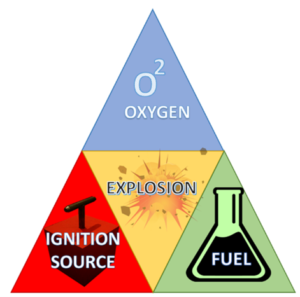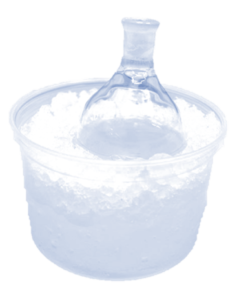“If you’re not nervous then you’re not paying attention.”
—Miles Davis
Every day, police officers worldwide are required to make split-second decisions. They must be able to quickly recognize evidence during a traffic stop while simultaneously talking to the driver, watching the passengers, and avoiding being flattened by other drivers. Then, they must safely and legally seize the contraband in a way that will hold up months or years later under intense scrutiny in court. The ability to detect a lie, recognize the faint smell of burnt marijuana, observe a pistol butt protruding under a sweatshirt, and identify drug paraphernalia by touch during a pat down is stock-in-trade for an experienced police officer.
However, when it comes to recognizing homemade explosives, even experienced officers may find themselves at a loss. This topic is rarely, if ever, covered in basic law enforcement academies or even in-service training. If it is covered in the academy, the details must be non-specific and intentionally vague lest the recipe end up in a recruit’s social media post. Some readers will say, “That’s the bomb squad’s job” and stop reading. Realists, however, know the bomb squad is not called until the officers on scene have discovered something that warrants a call-out. Are you able to recognize a bomb-making laboratory?
The Importance—and Challenge—of Bomb-Making Materials Awareness
In a recent class for drug unit detectives, I conducted a table-top exercise where a detective would come alone to a table at the front of the room. On the table was a single piece of paper. When told to start, the detective would turn the paper over and see a handful of common but disparate items. The detective had one minute to memorize the items. He then had to remember the items until he could debrief his team members.
The word I want you to focus on as you sensitize yourself to bomb-making materials is “context.”
This drill simulated an undercover detective or informant entering a suspect’s residence for a quick drug purchase and observing what might be a bomb-making laboratory. Each sheet of paper had photographs of bomb-making materials, including several from recent highly publicized incidents. This group of experienced detectives quickly realized the difficulty of recognizing and remembering all the items and understanding their relationship to each other. Undercover operations are high stress events in and of themselves. Nonetheless, detectives and informants must widen their field of view and determine if their team may face more than firearms when they return with a search warrant.
This skill became crucial in January 2022 when San Diego County Sheriff’s Office deputies received a report of an illegal camper. Upon their arrival, the officers discovered a military-style ammunition can filled with bags labeled “Ammonium Nitrate” and “Potassium Nitrate” in the suspect’s vehicle. Deputies established a perimeter, rerouted traffic and warned nearby residents to stay inside their homes. State and federal bomb investigators responded to the scene, searched the car, and found several improvised incendiary devices described as Molotov cocktails and gunpowder, as well as a quantity of methamphetamine. Deputies arrested the suspect for unlawfully making or owning explosive devices and possessing a controlled substance.
Context Matters
The word I want you to focus on as you sensitize yourself to bomb-making materials is “context.” Potassium Nitrate and Ammonium Nitrate are just fertilizers, right? Yes, in a barn. But, in the context of an ammunition can in a suspect’s vehicle, you should immediately think “oxidizers.” The only two things required for an explosive mixture are a fuel and an oxidizer. You must ask yourself, “Why are these things here?” and agree with yourself when you say, “This doesn’t make sense.” This is not the time to shrug your shoulders and check back in-service. It is time to call someone with training and experience for advice.
In June 2020, state and federal investigators in Pennsylvania served a search warrant. They discovered several items including cardboard tubing, fuse wire, aluminum powder, Ammonium Nitrate, and acetone at the Cambria County residence. Investigators also seized 12 illegally possessed firearms and suspected narcotics.
The design of homemade ignition sources is limited only by the imagination of the bomber and is typically made with primary explosives.
When we look at the list of the items seized on the search warrant, we see that none of them were illegal or even exotic. But as we learn to look for bomb-making materials we recognize that Ammonium Nitrate is an oxidizer and aluminum powder and acetone are fuels. The most common place we see an Ammonium Nitrate and aluminum powder mixture is in exploding target mixtures. These mixtures are made from two easily obtained substances that, when mixed in the right ratio, are highly sensitive to shock. While they are designed to be detonated by a rifle bullet, they will readily detonate when exposed to the right ignition source. Typical ignition sources contain “primary” explosives that can be produced by any do-it-yourself bomb maker with access to the internet and a hardware store.

Robert Estis Jr.
In February 2020, investigators from the Trussville Alabama Police Department discovered bomb-making materials, including aerial shells and a detonator, a device resembling a hand grenade, drugs, and several firearms while executing a narcotics search warrant. ATF agents from the Birmingham Field Office assisted with the investigation and determined the hand grenade was inert. The suspect, Robert Estis Jr., was arrested and charged with possession of a destructive device along with other weapons and drug-related charges.
At the Trussville warrant, investigators seized “aerial shells” among other items. Were they left over from New Year’s Eve? Was he getting ready for the Fourth of July? Or, was he planning to use the explosive filler in the aerial shells like the Tsarnaev brothers did on Patriots Day in 2013?
Does the collection of items make sense when looked at in context? Remember, under federal law the “destructive device” (bomb) does not need to be completed to meet the statutory requirement. In Title 18, U.S.C. Section 921, the description of a destructive device includes “any combination of parts either designed or intended for use in converting any device into any destructive device described in subparagraph (A) or (B) and from which a destructive device may be readily assembled.” For this reason, it is crucial to call an explosive specialist who can determine if all the necessary pieces of the puzzle are present.
Bomb-Making Materials Awareness: The Explosive Triangle
Stay with me here. I am a cop, not a chemist. And you don’t need to be one either. The simplest way to recognize an explosive mixture is by memorizing the three components of the explosive triangle.

Next up are fuels. Fuels commonly seen in homemade explosives include nitromethane (racing fuel), hexamine (emergency fuel tablets), aluminum powder, acetone, petroleum jelly, charcoal, and even sugar. Here is where context comes into play. Why would a person have weed killer, confectioners’ sugar, and gun powder in a mixing bowl in their garage? Residents of London know. In the 1990s the Provisional Irish Republican Army utilized icing sugar extensively in some of the largest vehicle-borne improvised explosive devices ever detonated. Icing sugar, known in the United States as confectioners’ sugar, is “arguably the most ubiquitous bomb ingredient ever” according to author A.R. Oppenheimer. This mixture was used in several vehicle borne IEDs with devastating effects. The largest was approximately 4,000 pounds (roughly equivalent to the bomb used in Oklahoma City).

Blasting Cap and Fuse
Simply mixing fuels and oxidizers together does not create a bomb, although some homemade mixtures, such as TATP, are so volatile that they often detonate unexpectedly. To be successful, bomb makers must obtain or engineer reliable ignition sources. Blasting caps, also known as detonators, are precision tools used by military, law enforcement bomb squads and commercial blasters.
The design of homemade ignition sources is limited only by the imagination of the bomber and is typically made with primary explosives. Again we turn to the Dictionary of Explosions & Explosives: “A primary explosive is one which is highly sensitive to spark, flame, impact, or friction, used in detonators and primers to initiate another less sensitive high explosive, namely the secondary explosive.” Homemade detonators will often be constructed to resemble a blasting cap with a pair of electrical wires or “time fuse” protruding from one end.

Ice Bath
In addition to bomb-making materials, officers should look for glassware and appliances that are being used to facilitate the mixing process. A coffee grinder containing white powder is out place. Grinders are often used to sensitize oxidizers. A beaker inside an ice bath should draw your attention. This process often involves an acid and is used to control the rate of a chemical reaction.
Again, common items out of context should make your cop senses tingle. These completed mixtures are often, but not always, in the form of a white powder. Like any suspicious white powder, they are dangerous and should not be inhaled, moved or even jostled. When you discover what you think may be a bomb-making laboratory, leave the area, set a perimeter at a safe distance and call for assistance.
If It Looks Odd, Call the Experts
It is impossible to adequately address all the formulas and permutations that have been used to make homemade explosives. Just remember, context is key. If it looks like someone is running a chemistry lab in their garage, hotel room, rented storage unit or mom’s basement, it is worth calling your local bomb squad, ATF Certified Explosives Specialist, or FBI Special Agent Bomb Tech.
Be safe!
References
- Alam N. (2007). Dictionary of Explosions & Explosives. International Society of Explosives Engineers. p. 228 and 247. ISBN. 1-892396-16-5.
- Oppenheimer AR. (2009). IRA: The Bombs and The Bullets. A History of Deadly Ingenuity. Irish Academic Press. p. 124. ISBN 978-0-7165-2895-1.
For more information on bomb-making materials, check out https://tripwire.dhs.gov/and https://www.cisa.gov/bmap.



